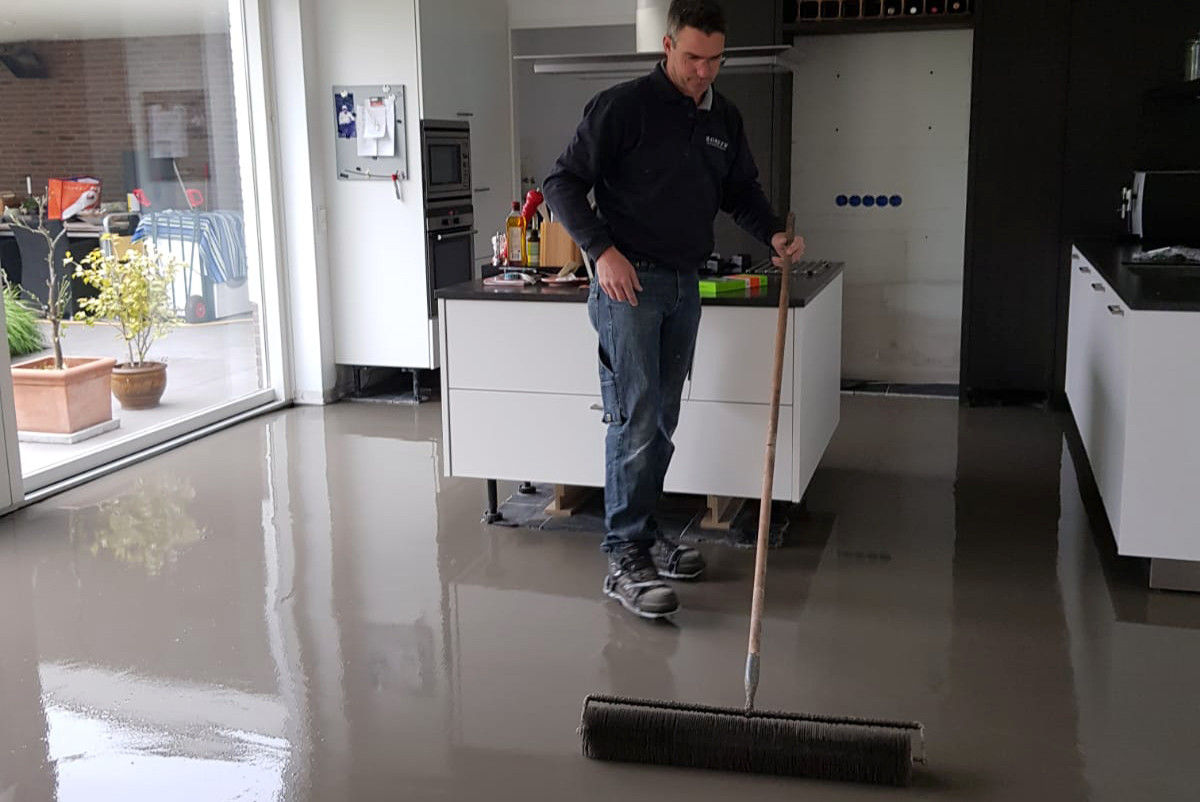Levelling
Levelling is just the first step for a quality finish.
Applying a thin layer of adhesive with a fine-tooth comb onto an ultra-flat surface is essential when laying LVT or carpet. Issues with the flatness and strength of the substrate must be avoided at all costs! The importance of a good levelling compound is absolutely essential.
Flat screed without peaks and valleys
Many screed floors are probably not smooth or dense enough to deliver the quality you want. Therefore, do not immediately start applying the finish, but take the time to first get the screed as flat as possible. Height differences consist of 'peaks' and 'valleys'. Using a ruler or long spirit level, first determine how 'bad' any deviations are. What you certainly don't want in an inhabited environment such as a house is to try and sand away the bumps. This creates enormous dust clouds that travel through the entire house, and there is minimal chance that you will get a truly flat floor.

Levelling fills height differences in the screed floor
Using a leveling compound is much easier because it flows beautifully on its own, and thus automatically hardens into a level surface. Any minimal height differences have literally been smoothed out and gaps that have arisen during the process of making of the screed floor have been corrected.
Due to the high fluidity, you must ensure that there are boundaries, such as skirting boards and thresholds or self-made temporary partitions, to prevent the product running away into the stairwell. A nice bonus is that the leveling compound also works as a primer, which is good for the economical absorption of your glue.




